
Signs and Symptoms of Molting in Parakeets
If you’re a proud parakeet parent, you’ve probably noticed that your feathered friend occasionally goes through some… well, let’s just say, “bad feather days.” Don’t panic—this is likely just parakeet molting, a natural process that helps your bird shed old feathers and grow new, shiny ones.
Understanding the signs and symptoms of molting can help you provide comfort and care during this feathery transition. So, buckle up and let’s get into the fluff of it!
1. Feathers Everywhere (It’s a Bird Confetti Party)
One of the first signs of parakeet molting is a sudden increase in loose feathers scattered around the cage. You might think your parakeet had a wild pillow fight when you weren’t looking. Fear not—this feather fallout is completely normal.
2. Pin Feathers (The Prickly Teen Phase)
As new feathers grow, they’ll appear as small, white, and waxy-looking shafts called pin feathers. Think of these as the awkward teenage stage of feather development. They may look odd, but they’re a sign that your bird’s new wardrobe is on its way.
3. Itchy and Scratchy Behavior
During parakeet molting, your bird might spend more time preening and scratching than usual. Imagine trying to wear a wool sweater in summer—yeah, it’s kind of like that. Help your buddy out by offering a shallow bowl for bathing or misting them lightly with water.
4. Mood Swings (Who Stole My Cheerful Bird?)
Molting can be a bit uncomfortable, and your usually chirpy parakeet might get a bit grumpy. They might be less social or a bit quieter than usual. Give them space but don’t be surprised if they still demand their favorite treats.
5. Less Energy (Nap Time Galore)
Growing new feathers requires a lot of energy, so your bird might take more naps or be less playful during this time. Let them rest—everyone deserves a lazy day now and then, right?
6. Changes in Flight Ability
Losing primary flight feathers can make flying tricky. Don’t laugh if your bird looks a little wobbly in the air—okay, maybe a tiny chuckle is fine. Just make sure their cage setup is safe and free from hazards.
How to Help Your Parakeet During Molting
- Boost Their Diet: Provide foods rich in protein, such as boiled egg or specially formulated pellets, to support feather growth.
- Offer Baths: A refreshing bath can help soothe itchy skin and clean up loose feathers.
- Provide Extra Love: Even if they’re grumpy, a gentle conversation or favorite toy can make them feel better.
- Keep Things Calm: Minimize stress and loud noises during this time.
Final Feathered Thoughts
Parakeet molting is a normal part of your bird’s life. Understanding the signs and symptoms helps you become the ultimate feathered friend caregiver. Just remember, every feather lost is one step closer to a fabulous new look. And who doesn’t love a good makeover?
First Molt Timing for Parakeets
So, your parakeet—that vibrant little chatterbox—has suddenly started looking like it just stepped out of a feather tornado. Don’t panic; this is probably the first molt, a rite of passage in your bird’s life.
Knowing when to expect this feathery transformation and how to handle it will help you keep your parakeet happy and comfortable. Let’s dive in (feathers first) and explore the timing of the first molt.
When Does the First Moult Happen?
Parakeets usually experience their first molt between three to four months of age. It’s kind of like their awkward teenage phase—complete with weird feather patches and occasional mood swings. If your young bird suddenly starts dropping feathers like confetti at a party, congratulations! They’re growing up.
Why Is Moulting Important?
Molting is how parakeets shed old, worn-out feathers and grow sleek, new ones. Think of it as upgrading from last season’s wardrobe to the latest runway collection. Parakeet molting ensures your bird stays warm, aerodynamic, and fabulous.
Signs Your Parakeet Is Molting
Here are some clues that your parakeet is going through its first molt:
- Feather Loss: You’ll find small feathers scattered around the cage. Don’t worry—they’re not going bald.
- Pin Feathers: These prickly little shafts are new feathers coming in. They’re basically feather sprouts.
- Itchy Behavior: Your bird might preen and scratch more than usual. It’s like having an itchy sweater day.
- Mood Changes: Some parakeets get a bit grumpy during molting. Be patient—we all have our off days.
How to Help During the First Molt
- Provide a Nutritious Diet: Feather growth takes energy. Boost their diet with foods rich in protein, like boiled egg or leafy greens.
- Offer Bathing Opportunities: A bath can help soothe itchy skin and clean up loose feathers. Your parakeet might splash around like it’s the bird version of spa day.
- Be Gentle: Those pin feathers are sensitive. Handle your bird carefully to avoid causing discomfort.
- Keep Things Calm: Loud noises and stress can make molting harder. Create a peaceful environment.
What If It Doesn’t Happen?
If your parakeet hasn’t molted by six months, it’s worth consulting an avian vet. While delayed molting isn’t always a problem, it’s good to rule out any underlying health issues.
Final Feathered Thoughts
The first molt is a big milestone in your parakeet’s life. Understanding the timing and symptoms of parakeet molting will help you provide the best care for your feathery friend. Just remember—every feather lost is a step toward a stunning new look. And who doesn’t love a good glow-up?
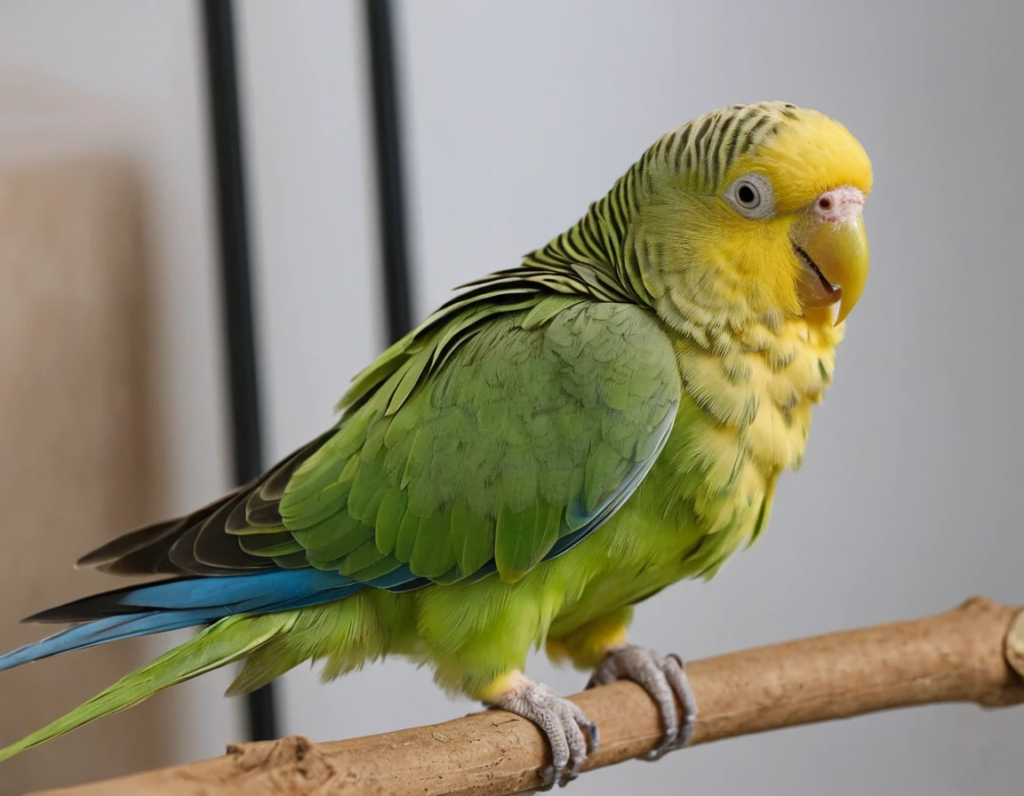
Frequency of Molting in Parakeets
Ever wondered how often your parakeet will go through a feather makeover? Parakeet molting is a perfectly normal (and necessary) part of keeping those feathers fabulous and functional. But just how often should you expect your feathery friend to start shedding like it’s trying out for a new role in Birds of a Feather? Let’s break it down.
How Often Do Parakeets Molt?
Most parakeets molt at least once a year, but many will go through two or even three molts annually. Think of it as a seasonal wardrobe change—out with the old feathers, in with the new.
Some birds are overachievers and molt more frequently, while others stick to the once-a-year schedule. Either way, parakeet molting is nature’s way of keeping your bird’s feathers in top-notch condition.
Factors That Influence Molting Frequency
- Seasonal Changes: Changes in daylight hours and temperature can trigger molting.
- Diet and Health: A healthy diet supports regular molting. Nutrient deficiencies may delay or disrupt the process.
- Stress Levels: Big changes, like moving to a new home, can sometimes prompt a molt.
- Genetics: Some birds are just wired to molt more often.
Signs Your Parakeet Is Molting (Again)
- Feather Loss: The cage floor becomes a feather collection zone.
- Pin Feathers: Those little spiky shafts show up, signaling new feather growth.
- Itchy Behavior: Your bird might scratch and preen more than usual.
- Mood Swings: Grumpiness can be part of the molting package—even the happiest birds need their space sometimes.
How to Help During Frequent Molting
- Boost Their Nutrition: Include protein-rich foods to support feather growth. Leafy greens and specially formulated bird pellets work wonders.
- Offer Bath Time: Misting your parakeet or providing a shallow bath can soothe itchy skin.
- Reduce Stress: Keep their environment calm and consistent.
- Be Gentle: Handle your parakeet carefully to avoid irritating sensitive pin feathers.
What If Moulting Seems Excessive?
If your parakeet is molting constantly or has bald patches, it might be a sign of an underlying issue. Schedule a visit with an avian vet to rule out health concerns.
Final Feathered Thoughts
Parakeet molting may seem like a hassle (for both you and your bird), but it’s a vital part of their feather care routine. Understanding the frequency of molting will help you better care for your feathered friend. And hey, every molt is just one step closer to a fresh new look—move over, fashion week!
Duration of Molting in Parakeets
If your parakeet looks like it’s auditioning for a role as “Bird Who Lost a Pillow Fight,” chances are it’s going through molting. But how long does this feathery transformation last? Let’s break down the duration of parakeet molting and what you can expect during this sometimes awkward but natural process.
How Long Does Moulting Last?
Typically, a parakeet molt lasts around 2 to 3 weeks, but don’t be surprised if it stretches a bit longer. Some birds are overachievers and like to take their time growing their fancy new feathers. Others get through it quickly, ready to strut their stuff in no time.
Factors That Affect Molting Duration
- Age: Young birds may experience shorter molts as their bodies are still getting used to the process.
- Diet: A well-balanced diet can help speed up the process. Feather growth takes energy!
- Stress Levels: Stress can prolong molting, so a calm environment is key.
- Health: Healthy birds tend to have smoother, quicker molts.
What Happens During Moulting?
Molting isn’t just about feathers flying everywhere. Your parakeet will shed old, worn-out feathers and grow shiny new ones. Pin feathers will emerge—those spiky little shafts that make your bird look like it’s having a bad feather day.
Signs Your Parakeet Is Nearing the End of a Molt
- Feather Loss Slows Down: Fewer feathers scattered around the cage.
- Pin Feathers Open Up: Those stiff shafts transform into soft, beautiful feathers.
- Return to Normal Behavior: Your bird’s energy levels and mood improve.
How to Help During the Molting Process
- Boost Their Diet: Include protein-rich foods like cooked egg and leafy greens to support feather growth.
- Provide Bathing Opportunities: Misting or offering a shallow bath can help soothe itchy skin.
- Be Patient: Molting can make your parakeet a bit grumpy. Give them space if needed.
- Create a Calm Environment: Keep noise and activity levels down.
When to Worry
If your parakeet molting lasts beyond six weeks or if you notice bald patches, excessive scratching, or other signs of distress, it’s time to consult an avian vet.
Final Feathered Thoughts
The duration of parakeet molting may vary, but with a bit of care and understanding, your bird will come out looking fabulous. Remember, every feather lost is just a step closer to a show-stopping new look. And hey, who doesn’t love a good makeover story?
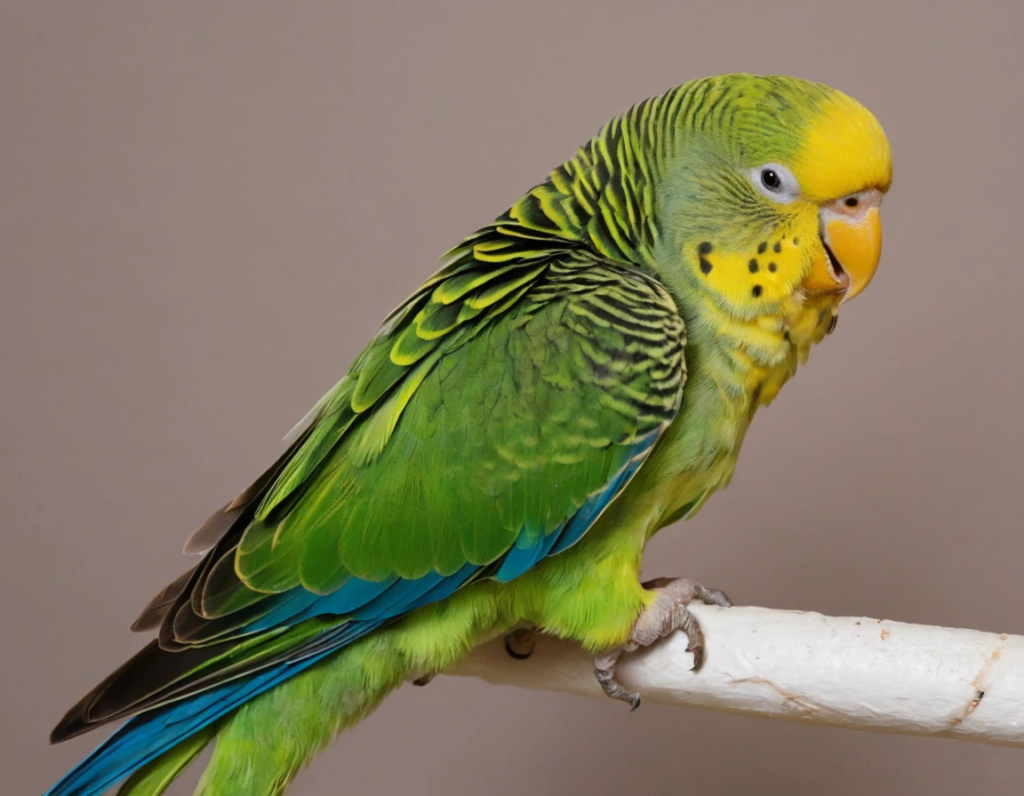
Behavioral Changes During Molting in Parakeets
Molting: that time when your charming, feathered friend transforms into a slightly cranky and confused ball of fluff. Parakeet molting isn’t just about shedding feathers—it can come with noticeable changes in your bird’s behavior. Understanding these changes will help you keep your parakeet comfortable and happy during this temporary phase.
1. Grumpy Bird Syndrome (Yes, It’s a Thing)
Don’t be surprised if your usually cheerful parakeet turns into a bit of a diva during molting. Those new pin feathers can be itchy and sensitive, making your bird less tolerant of handling or social interactions. Think of it like a bad hair day that lasts for weeks.
2. Increased Preening (Feather Fashion Fix)
Your parakeet might spend extra time preening during molting. This helps them remove loose feathers and groom the new ones. It’s like trying to organize a closet full of clothes—feather edition.
3. Sleep, Sleep, and More Sleep
Growing new feathers takes a lot of energy. You might notice your parakeet napping more than usual. Let them catch those extra zzz’s—beauty rest is essential, even for birds.
4. Changes in Appetite (Food, Please!)
Some parakeets may eat more during molting to fuel feather growth, while others might have a slight decrease in appetite. Keep offering a variety of healthy foods, including protein-rich treats like boiled egg or leafy greens.
5. Less Playful and Vocal
If your normally chatty parakeet goes radio silent or loses interest in toys, don’t worry. They’re just focusing their energy on feather production. Give them space but keep offering gentle interaction.
6. Sensitivity to Touch
Those emerging pin feathers are super sensitive. Handle your bird gently and avoid unnecessary contact during this time. Trust us—your parakeet will appreciate it.
How to Help Your Parakeet During Molting
- Provide a Nutrient-Rich Diet: Include protein-packed foods to support feather growth.
- Offer Bathing Opportunities: A bath or misting can help soothe itchy skin.
- Keep the Environment Calm: Minimize loud noises and sudden changes.
- Be Patient: Respect your bird’s mood swings and give them space.
Final Feathered Thoughts
Parakeet molting can be a challenging time, but it’s also a natural and important process. By understanding the behavioral changes during molting, you can support your parakeet through this temporary phase. Just remember, a few weeks of grumpiness is a small price to pay for a bird that’ll soon be flaunting a fabulous new set of feathers. And who doesn’t love a good glow-up?
Dietary Needs During Molting in Parakeets
Molting: that time when your parakeet starts shedding feathers like confetti at a surprise party. While parakeet molting is a completely natural process, it requires a bit of extra care—especially when it comes to diet. Growing new feathers takes a lot of energy, and a nutrient-rich menu can make all the difference.
So, what should be on the parakeet’s plate during this feathery transformation? Let’s dig in.
1. Protein Power (The Feather Builder)
Feathers are made primarily of keratin, a protein. During molting, your bird’s body needs more protein to produce those shiny new feathers. Offer boiled eggs, cooked quinoa, or high-quality pellets to boost their intake.
Pro tip: Don’t go overboard with protein. Balance is key—your parakeet isn’t training for a bodybuilding competition.
2. Leafy Greens and Veggie Goodness
Dark leafy greens like spinach and kale are packed with vitamins that support feather growth. Carrots and bell peppers provide beta-carotene, which helps maintain vibrant feather colors.
Funny but true: If your parakeet looks suspiciously at the veggies, try chopping them into tiny pieces—sometimes birds just need their food to be aesthetically pleasing.
3. Healthy Fats (For Feather Shine)
Seeds like flaxseed and small amounts of nuts can provide healthy fats that promote shiny, sleek feathers. Just remember—moderation is key.
4. Calcium for Strong Feathers
Calcium isn’t just for bones; it’s important for feather health too. Offer cuttlebone or calcium-enriched bird treats.
5. Fresh Water (Feather Hydration)
Always make sure your parakeet has access to fresh, clean water. Hydration is essential for feather growth and overall health.
Foods to Avoid During Molting
- Sugary or salty snacks (your parakeet doesn’t need chips, trust us).
- Fried or processed foods.
- Avocado, chocolate, and caffeine—these are toxic to birds.
How to Serve It Up
- Rotate their food options to keep things interesting.
- Offer food in small, manageable portions.
- Keep an eye on what they enjoy and adjust accordingly.
Final Feathered Thoughts
Parakeet molting can be a bit of a rough patch, but a balanced and nutritious diet will help your bird sail through it with style. Remember, every feather shed is just making room for a new, fabulous look. And who doesn’t love a fresh wardrobe update?
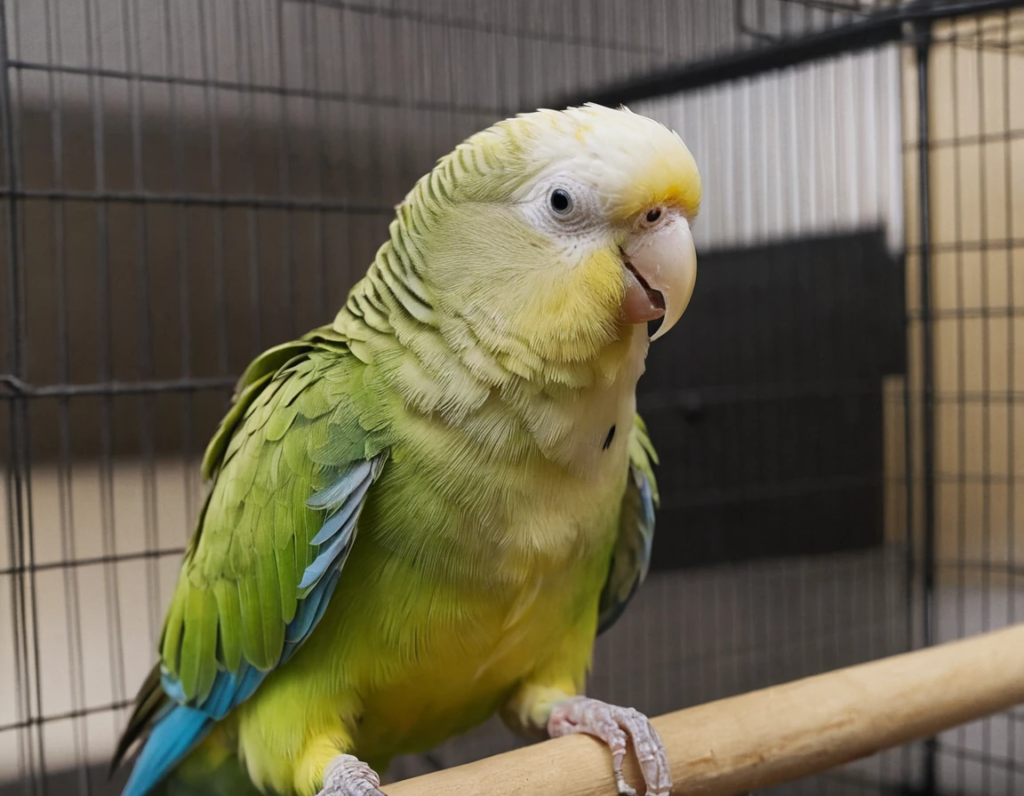
Bathing and Preening Support for Parakeets During Molting
If your parakeet looks like it just walked out of a feather explosion, congratulations—you’re witnessing parakeet molting! As new feathers come in, they can be itchy and uncomfortable, making proper bathing and preening support essential.
Here’s how to help your parakeet feel like the fabulous feathered diva it truly is.
1. Bathing: Nature’s Itch Relief
Bathing is not just a luxury; it’s a necessity during parakeet molting. Water helps soften the keratin coating on new pin feathers, making it easier for your bird to preen and manage feather growth.
Bathing Options:
- Misting: Use a fine spray bottle to gently mist your parakeet. Just make sure the water is room temperature—no one likes a chilly surprise.
- Bird Bath Bowl: Place a shallow bowl of water in the cage and watch your bird splash around like it’s auditioning for a water park ad.
- Shower Perch: If your parakeet enjoys the sound of running water, a shower perch can turn bath time into a spa experience.
Funny but true: Some parakeets love baths; others act like you’re asking them to do taxes.
2. Preening: The Feather Fixer
Preening is how parakeets maintain their feathers, keeping them clean and aligned. During molting, this behavior ramps up as they deal with itchy pin feathers.
How to Support Preening:
- Provide Perches: Different types of perches help your bird reach all those tricky spots.
- Minimize Handling: Pin feathers are sensitive, so avoid too much touching.
- Encourage Gentle Grooming: If your bird has a buddy, they might help preen each other—just bird BFF things.
3. Bathing Tips for Success
- Frequency: Offer bathing opportunities 2-3 times a week during molting.
- Post-Bath Care: Ensure your parakeet is in a warm, draft-free environment after a bath.
- Monitor Preferences: Some birds prefer misting, while others dive right into a bowl.
What If They Hate Bathing?
Not all parakeets are water enthusiasts. If your bird resists baths, don’t force it. Instead, keep offering misting sessions and let them decide when they’re ready.
Final Feathered Thoughts
Parakeet molting can be itchy and uncomfortable, but with proper bathing and preening support, your bird will feel much better. Whether they splash like a pro or cautiously dip a toe, every effort helps them through this feathery transformation. After all, who doesn’t love a little self-care?
Distinguishing Normal vs. Abnormal Molting in Parakeets
Molting is a natural part of a parakeet’s life—think of it as their seasonal wardrobe upgrade. But how do you tell the difference between regular parakeet molting and something more concerning? Let’s break it down so you know when to relax and when to sound the feathered alarm.
Normal Molting: The Feathery Facelift
Parakeet molting typically happens once or twice a year and lasts for about 2-3 weeks. During this time, your bird will shed old, worn-out feathers and grow fresh new ones. It’s like swapping out last season’s wardrobe for a fabulous new look.
Signs of Normal Molting:
- Gradual Feather Loss: Feathers fall out evenly, without creating bald patches.
- Pin Feathers Appear: These little spiky shafts signal new feather growth.
- Mild Itchiness: Your parakeet may scratch or preen more frequently.
- Mood Swings: A bit of grumpiness is normal—after all, growing feathers is hard work!
Funny but true: If your parakeet looks like it’s having a bad hair day, congratulations—molting is in full swing.
Abnormal Molting: Time to Investigate
While most molts are uneventful, there are times when something isn’t quite right. Abnormal molting can be a sign of stress, poor nutrition, or underlying health issues.
Warning Signs of Abnormal Molting:
- Bald Patches: Feather loss in specific areas with no regrowth.
- Excessive Scratching or Self-Mutilation: This can indicate skin irritation or stress.
- Prolonged Molting: If molting lasts beyond 6 weeks, it’s time to consult a vet.
- Damaged or Poor-Quality Feathers: New feathers that grow in twisted, broken, or discolored.
Possible Causes of Abnormal Moulting:
- Nutritional Deficiencies: Lack of essential vitamins and minerals.
- Environmental Stress: Sudden changes, loud noises, or overcrowding.
- Health Issues: Parasites, infections, or hormonal imbalances.
- Over-Grooming: Sometimes parakeets get a bit too enthusiastic with preening.
How to Support Healthy Molting
- Provide a Balanced Diet: Include protein-rich foods and fresh veggies.
- Create a Calm Environment: Reduce stress by keeping their space consistent and quiet.
- Offer Bathing Opportunities: This helps soothe itchy skin.
- Consult an Avian Vet: If you’re unsure whether the molt is normal, it’s better to be safe than sorry.
Final Feathered Thoughts
Parakeet molting can look a bit messy, but it’s usually nothing to worry about. By knowing the difference between normal and abnormal molting, you’ll be better equipped to support your feathered friend. And remember, every feather lost is just a step closer to a dazzling new look. Talk about a glow-up!
Environmental Factors Affecting Molting in Parakeets
When your parakeet starts looking like it’s auditioning for a role in “Feathered Frenzy,” it’s probably going through molting. But did you know that the environment plays a big role in how smoothly this process goes? Parakeet molting isn’t just about biology—it’s influenced by what’s going on around them.
Here’s a feather-by-feather guide to environmental factors that can affect your bird’s molting experience.
1. Light Exposure: Feather Calendar Setter
Parakeets are tropical birds, and their molting schedule can be influenced by the amount of daylight they receive. Longer daylight hours signal that it’s time to shed those old feathers.
Tips:
- Ensure your parakeet gets about 10-12 hours of light per day.
- If natural light isn’t available, consider a bird-safe UV lamp.
Funny but true: Don’t be surprised if your parakeet starts acting like it owns a tanning salon.
2. Temperature Fluctuations: Feather Drama Alert
Sudden changes in temperature can stress your parakeet and impact molting. They thrive in consistent, moderate temperatures.
Tips:
- Keep your bird’s environment between 65°F and 80°F.
- Avoid placing the cage near drafts, air conditioning vents, or direct heat sources.
3. Humidity Levels: The Feather Softener
Low humidity can lead to dry, itchy skin during molting, making your parakeet uncomfortable.
Tips:
- Maintain a humidity level of around 50-60%.
- Use a humidifier if needed, or offer regular misting sessions.
Pro Tip: A damp parakeet after a misting session is a sight to behold—somewhere between adorable and utterly confused.
4. Stress: The Molting Saboteur
Stress can trigger abnormal molting or prolong the process. Loud noises, new pets, or changes in cage location can all be stressors.
Tips:
- Keep your bird’s environment calm and predictable.
- Provide plenty of perches and toys for mental stimulation.
5. Cage Size and Cleanliness: Feather-Friendly Living
A cramped or dirty cage can negatively affect your parakeet’s health and molting.
Tips:
- Ensure the cage is spacious enough for your bird to move freely.
- Clean the cage regularly to maintain a healthy environment.
Final Feathered Thoughts
Parakeet molting can be a bit of a mess, but creating a supportive environment makes it much easier for your bird. From proper lighting to maintaining humidity levels, small changes can make a big difference. Remember, a happy parakeet equals a fabulous set of feathers—and who doesn’t love a good makeover?
Molting and Flight Ability: The Feather-Filled Journey
If you’ve ever watched a bird go through a molting phase, you’ve likely thought, “What in the world is happening to that poor creature?” Feathers everywhere, some half-grown, some completely missing. But don’t worry – it’s all part of nature’s grand plan. Let’s dive into the fascinating world of molting and how it affects a bird’s flight ability.
What is Molting?
Molting is the process where birds shed old feathers and grow new ones. Think of it as a bird’s version of a makeover, minus the spa day. It happens annually or seasonally and is crucial for maintaining the health and flight performance of the bird. Birds like our little friends, the parakeets, shed feathers in patches, so you might notice your parakeet molting during certain times of the year.
But let’s be clear – molting isn’t a one-time event. Birds molt in cycles, sometimes a little here, a little there. It’s like a wardrobe change that doesn’t happen all at once but rather over time.
How Does Moulting Affect Flight Ability?
Now, if you’re a bird lover, you’re probably wondering: “Will my parakeet be grounded while going through this feather crisis?” The short answer is: yes, flight might take a little hit during this time. When birds molt, especially when they’re losing primary or flight feathers, they can’t soar around quite as gracefully as usual. Imagine trying to run a race while wearing shoes two sizes too big – that’s what it might feel like for a bird in the middle of molting. Not impossible, but definitely a bit slower and more wobbly.
However, once those new feathers grow in, your bird will be back to its usual aerial acrobatics, zooming around like a professional skydiver without the parachute.
Parakeet Molting: A Specific Challenge
Let’s take a moment to talk about parakeets, those small, colorful bundles of joy that are so charming and full of energy. During a parakeet molting phase, your bird might seem a bit sluggish, or you may notice it plucking at its feathers (yep, they’re just trying to help the process along). While it’s totally normal, it can also make them less flight-ready.
In fact, if your parakeet is in the middle of molting, it may even become a little more grounded than usual – just like a superhero without its cape. But rest assured, this phase doesn’t last forever. Once those feathers have grown back in full force, your parakeet will be right back to flapping around, showing off those brilliant wings.
How Long Does Moulting Take?
Molting usually takes a few weeks to a couple of months, depending on the species and the individual bird. During this time, it’s important to be extra patient with your feathered friend, especially if they seem a bit off balance. It’s like they’re going through a little “self-care” period – only instead of a face mask, they’re getting a full-body feather makeover.
You might notice that your bird’s flight ability returns gradually. It’s like learning to walk again but in the sky. The good news? Molting doesn’t affect their health in a bad way, and soon enough, those fresh feathers will help them fly even better than before.
Tips for Helping Your Bird During Molting
- Provide Extra Nutrition: Molting is a lot of work. Your bird needs more protein, vitamins, and minerals to support feather growth. Add in some extra seeds or leafy greens (not just for your parakeet’s Instagram selfies, but for their well-being).
- Give Them Space: Birds can be a bit sensitive during this time, so avoid making them feel too stressed. Maybe don’t throw a party in front of their cage while they’re in the middle of molting – they’re not in the mood for a crowd.
- Make Sure They Have Plenty of Room to Move Around: Even though they may not be flying as much, giving them a big enough space to stretch their wings and move helps maintain their physical condition.
- Check for Pinfeathers: These are new feathers growing in, and they might be a little sensitive. If you see pinfeathers, don’t worry – they’ll smooth out as the new feathers mature. Just make sure not to pluck them (unless you’re a trained bird masseuse, which, let’s face it, you probably aren’t).
Conclusion
Molting is just part of the bird experience. It’s their way of refreshing and rejuvenating, and while it may temporarily affect their ability to fly, it’s all for the greater good. Just remember, whether it’s a parakeet molting or a hawk, every bird goes through this phase, and after it’s over, they’ll be ready to spread those wings and take off into the sky once again!
So, the next time your bird seems a little less graceful in flight, just remember – they’re getting a new wardrobe, and sometimes that takes time. In the meantime, enjoy the extra snuggles and give your feathered friend a little extra TLC as they go through their fabulous feather transformation.
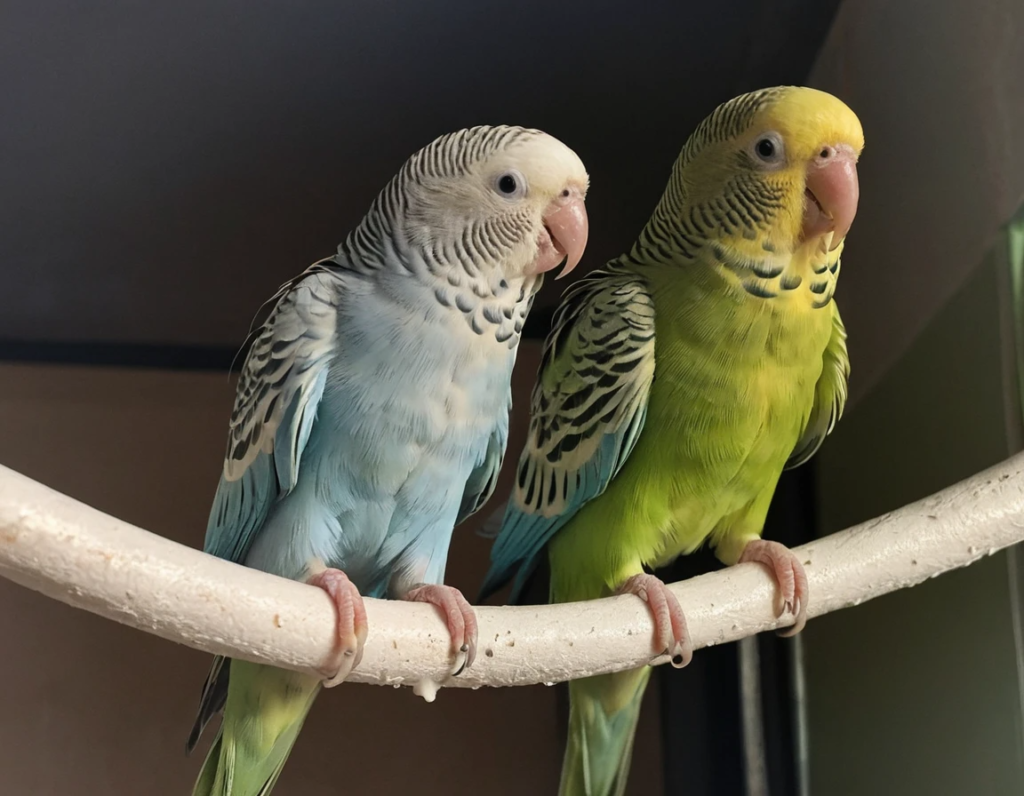
20 FAQs About Parakeet Molting
1. What is molting in parakeets
Answer: Moulting is the natural process where parakeets shed their old feathers and grow new ones. It’s a way for them to refresh their plumage and maintain their health.
2. How often do parakeets moult?
Answer: Parakeets usually molt once or twice a year. Some may molt more frequently, depending on their age, health, and environment.
3. How long does parakeet moulting last?
Answer: The molting process can last anywhere from a few weeks to a couple of months, depending on the bird’s condition and environment.
4. What are pin feathers?
Answer: Pin feathers are the newly grown feathers that start as small, pointed shafts. These can be sensitive and require extra care.
5. Can parakeets fly while moulting?
Answer: While molting, parakeets may experience difficulty flying since they lose some flight feathers. However, once their feathers grow back, they’ll regain full flight ability.
6. Why does my parakeet seem more sluggish during moulting?
Answer: Molting can be exhausting for your parakeet. They’re putting energy into growing new feathers, so it’s normal for them to feel a bit slower and more tired.
7. Should I trim my parakeet's feathers during molting?
Answer: It’s generally not necessary to trim their feathers during molting. Let nature take its course, and only trim feathers if they are damaged or require attention.
8. How can I help my parakeet during moulting?
Answer: Provide extra nutrition, a comfortable environment, and avoid stress. Offer foods rich in vitamins and minerals to support feather growth.
9. Is it normal for parakeets to pluck their feathers during moulting?
Answer: It’s normal for parakeets to gently preen or pluck feathers to help the molting process along, but excessive plucking could be a sign of stress or health issues.
10. Why are my parakeet's feathers falling out in patches?
Answer: Parakeets molt in stages, which can cause patches of feathers to fall out at different times. It’s a normal part of the molting process.
11. Can molting cause my parakeet to be more irritable?
Answer: Yes, molting can make your parakeet feel sensitive or uncomfortable. They might be a bit more irritable than usual, so give them space and patience.
12. Do parakeets lose all their feathers during moulting?
Answer: Parakeets don’t lose all their feathers at once. They molt in sections, with old feathers falling out and new ones growing in gradually.
13. What signs indicate that my parakeet is molting?
Answer: You’ll see feathers shedding, patchy areas of missing feathers, or perhaps some new, small pinfeathers emerging on their body.
14. Can a parakeet moult more than once a year?
Answer: Most parakeets molt once or twice a year, but some may molt more often, especially if they are younger, stressed, or living in a fluctuating environment.
15. Can moulting affect my parakeet’s health?
Answer: In most cases, molting is a natural and healthy process. However, if your parakeet seems unusually sick or stressed during molting, it’s a good idea to consult a vet.
16. What is the best food to give my parakeet during moulting?
Offer a diet rich in vitamins and minerals, including leafy greens, egg food, or a fortified parakeet pellet. Protein-rich foods can also help with feather regrowth.
17. Is molting painful for my parakeet
Answer: Moulting can cause some discomfort, especially when pin feathers are growing, but it’s not typically painful. Your parakeet may just be a bit more sensitive during this time.
18. How can I tell if my parakeet is stressed during molting?
Answer: If your parakeet is losing an excessive amount of feathers, pulling out feathers in a non-natural way, or showing signs of aggression or excessive preening, they may be stressed.
19. Does moulting affect a parakeet’s behaviour?
Answer: Yes, molting can cause your parakeet to be more tired, cranky, or irritable. They might also seek more rest than usual.
20. When will my parakeet be back to its usual self after molting?
Answer: Once the new feathers have fully grown in, your parakeet will return to its normal energetic self. This can take a few weeks, so be patient and give them time to adjust.

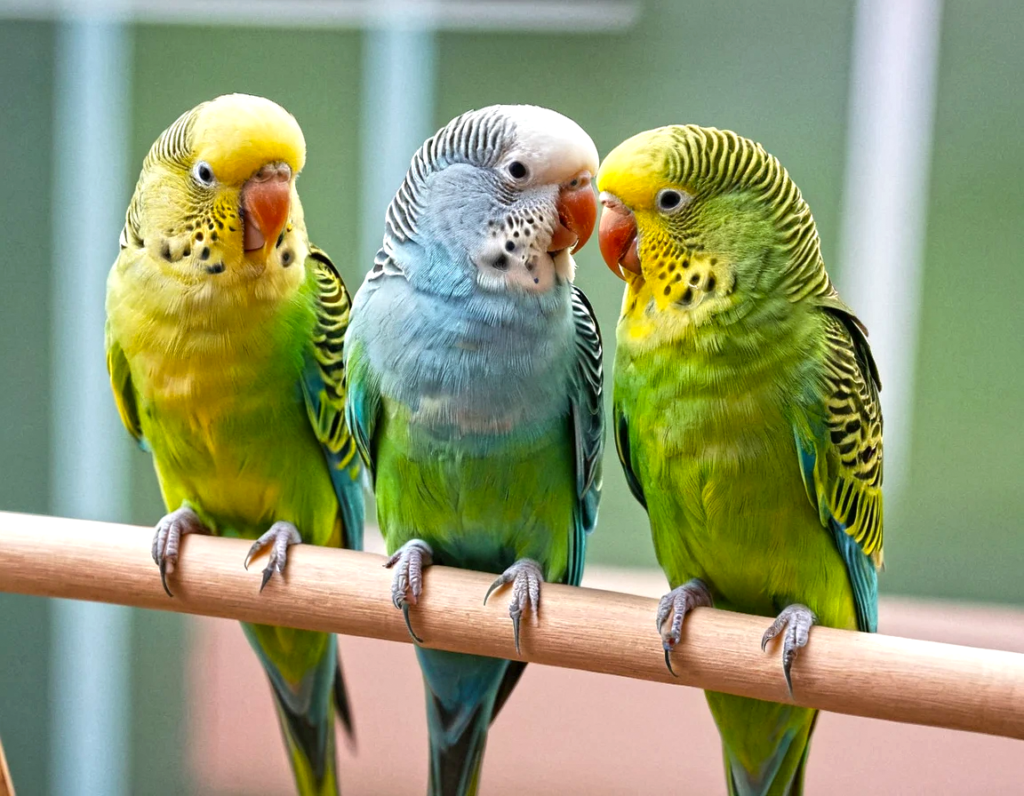
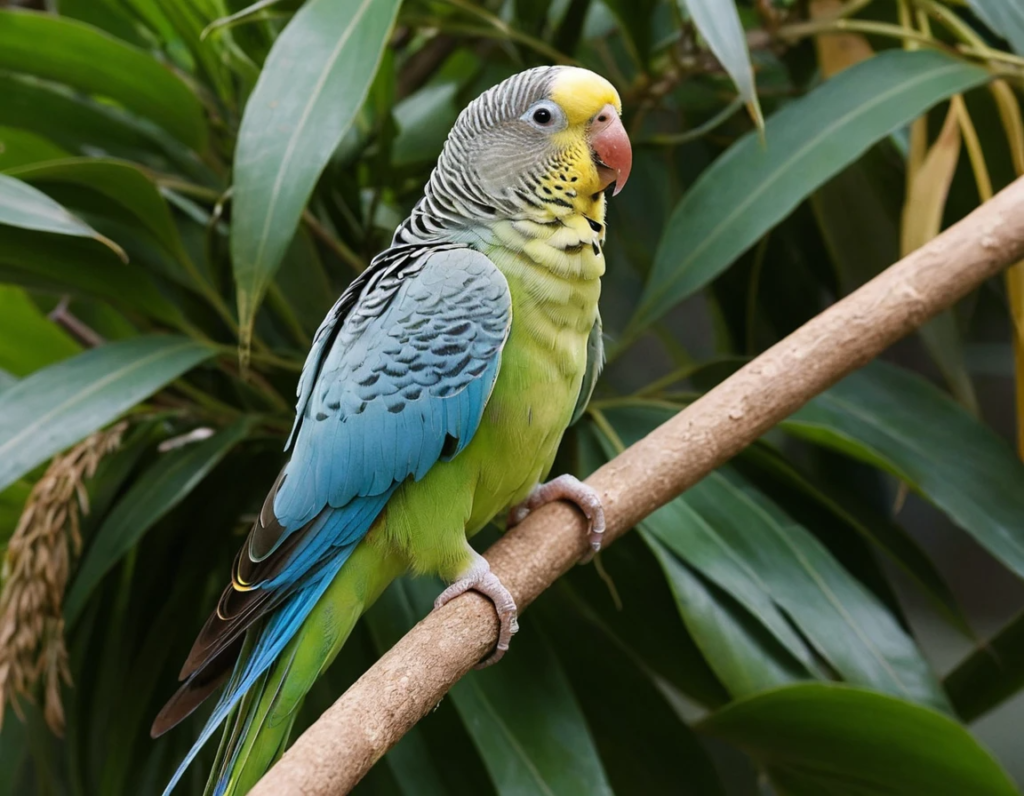
Dikkatli bahis yapmak, deneyiminizi güvenceye alır .
Bahis limitlerinizi önceden belirlemek , dengeli oynamaya katkı sağlar .
Katılımınızı hariç tutma araçlarını kullanmak, sorunları engellemenize katkıda bulunur.
Alev Online Casino
Kumarın sorunlarının farkında olmak, sorunsuz deneyim temin eder .
İhtiyaç halinde danışmanlık hizmeti başvurmak, dengeyi korumaya katkı sağlar .
Bu önlemler, sorumluluk dolu kumar deneyimi keyfini maksimize eder.